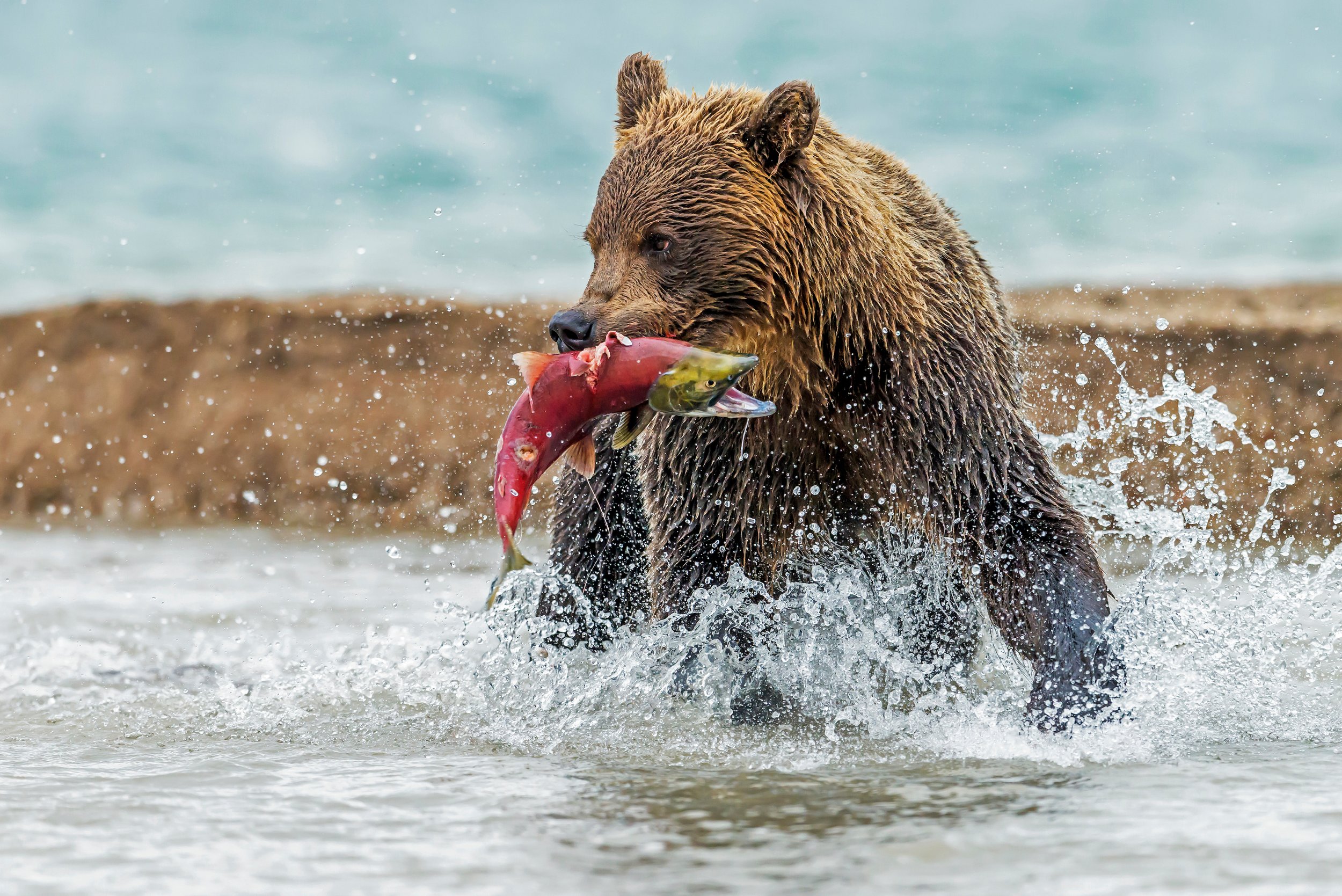Anadromous: fish born in freshwater who spend most of their lives in saltwater and return to freshwater to spawn, including salmon and steelhead.
state of the resource
Born in freshwater, migrating to ocean waters to feed and grow, and returning to natal waters to spawn, anadromous fishes are dependent on diverse environments during different portions of their life cycle. This strategy adds size and strength to salmon and steelhead but adds all the dangers that lurk in ocean, coastal, estuarine, and freshwater waters.
Throughout their life cycle, salmon and steelhead fish face many naturally occurring obstacles — e.g., long distance migrations from marine environments to fresh water. The construction of dams and hatcheries coupled with commercial and recreational harvest and the ongoing loss of habitats all have increased the physiological demand on anadromous fish. As these stressors have increased, the numbers of anadromous fishes decrease and their numbers are on the decline along both the Atlantic and Pacific coasts.
Habitat, Harvest, Hydropower, Hatcheries, and Heat
For nearly a century, the major drivers of salmon and steelhead decline could be categorized as the Four H’s: Habitat, Harvest, Hydropower, and Hatcheries. Unfortunately, we must now add a “Fifth H” to the mix: Heat. Up and down the West Coast, climate change is posing a new and dangerous threat to wild salmon and steelhead. From the perilously low and hot river conditions that are becoming more common as our summers get hotter and drier to the frequently inhospitable ocean conditions caused by ocean acidification and events like the “blob,” climate change is becoming an increasingly significant threat to the future of these fish.
Heat: A Growing THREAT TO SALMON
Heat is a threat multiplier to salmon survival, increasing the detrimental effects of each of the factors impacting salmon conservation. As human-caused climate change accelerates, the impacts of the other H's are expected to intensify. In Heat, the Unspoken Fifth and Unspoken Threat to Salmon Survival, the Native Fish Society describes ways climate change will change the needs of fish species and the conservation challenges they face. A few examples:
Heat
The impacts of climate change are becoming increasingly apparent across the region’s landscapes. Hotter summers, warmer winters, and decreased snowpack have hit waterways and native fish especially hard. Native fish face the double whammy of decreasing stream flows and a hotter climate.
Hatcheries
The two main effects of hatcheries on wild fish--competition and genetic introgression--are exacerbated by climate change.
Harvest
Increased mortality from catch and release fisheries can be expected under climate change due to the effects of the strain of fighting and being exposed to air in high water temperatures.
Hydropower
Dams often alter the temperature conditions in rivers in addition to changing the flow regime. With climate change, dams releasing water from the top of reservoirs will likely create areas downstream that exceed the temperature thresholds of salmonids.
Habitat
Salmon and steelhead gain most of their body mass in the marine environment, but climate change has led to degraded ocean conditions. Increases in sea surface temperatures have decreased ocean productivity and reduced prey availability. Acidification increases stress to salmon and steelhead and also decreases prey populations.
CHROME
Steelhead and salmon need cold, clean water to survive. We have an obligation to protect our vital steelhead and salmon fisheries from climate change and ocean acidification. CHROME is a collaborative effort between Conservation Hawks and the cinematic team at Conservation Media.
GIVE ME MORE!
Steelhead 101. A primer on steelhead fundamentals prepared by the Wild Steelhead Coalition.
Best, maybe last, chance for salmon. A case for Upper Snake River dam removals (2/7/2022).
Heat, the Unspoken Fifth and Unspoken Threat to Salmon Survival. Native Fish Society.
State of Atlantic Salmon Populations. Atlantic Salmon Federation
Global Warming Is Pushing Pacific Salmon to the Brink, Federal Scientists Warn. Bob Berwyn, Inside Climate News (2019).

